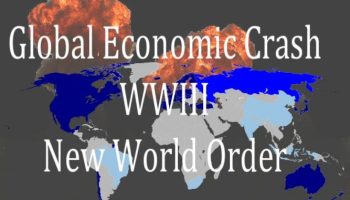United against corruption for development, peace and security
 Aerial group photo of staff in Geneva simulating the Sustainable Development Goals logo on United Nations Staff Day. UN Photo/Jean-Marc Ferré. "On International Anti-corruption Day, let us reaffirm our commitment to ending the deceit and dishonesty that threaten the 2030 Agenda and our efforts to achieve peace and prosperity for all on a healthy planet." — UN Secretary-General, Ban Ki-moon
Aerial group photo of staff in Geneva simulating the Sustainable Development Goals logo on United Nations Staff Day. UN Photo/Jean-Marc Ferré. "On International Anti-corruption Day, let us reaffirm our commitment to ending the deceit and dishonesty that threaten the 2030 Agenda and our efforts to achieve peace and prosperity for all on a healthy planet." — UN Secretary-General, Ban Ki-moon
Every year $1 trillion is paid in bribes while an estimated $2.6 trillion are stolen annually through corruption – a sum equivalent to more than 5 per cent of the global GDP. In developing countries, according to the United Nations Development Programme, funds lost to corruption are estimated at 10 times the amount of official development assistance.
Corruption is a serious crime that can undermine social and economic development in all societies. No country, region or community is immune. This year UNODC and UNDP have developed a joint global campaign, focusing on how corruption affects education, health, justice, democracy, prosperity and development.
The 2016 joint international campaign focuses on corruption as one of the biggest impediments to achieving the Sustainable Development Goals (SDGs).
what you can do.
Work with MACC to curb graft, Malaysians urged
 Raising awareness: Dzulkifli (second from left) handing out caps, posters and leaflets to members of the public at the KLCC LRT station during MACC’s walkabout session held in conjunction with International Anti-Corruption Day.
Raising awareness: Dzulkifli (second from left) handing out caps, posters and leaflets to members of the public at the KLCC LRT station during MACC’s walkabout session held in conjunction with International Anti-Corruption Day.KUALA LUMPUR: The Malaysian Anti-Corruption Commission (MACC) has urged the public to work with the agency to curb graft and make the country a corruption-free nation within three years.
Its chief commissioner Datuk Dzulkifli Ahmad said efforts to combat corruption and abuse of power did not lie exclusively with MACC and should be supported by the society at large.
“Firstly, we must hate corruption. Secondly, we must reject corruption and thirdly, the people must cooperate with MACC to fight corruption and abuse of power,” he told pressmen yesterday during a MACC walkabout session held in conjunction with International Anti-Corruption Day.
Dzulkifli said he appreciated the support given by people regardless of age, race and religion because “corruption is detrimental to all layers of society”.
The MACC team and NGO volunteers distributed leaflets to RapidKL LRT passengers at 15 stations during the walkabout.
Among others, the leaflets stated that corrupt practices also included those who offered bribes to officials or made false claims for work or services done.
“If one does not report a corrupt practice, one is passively encouraging corruption and allowing the corrupt to walk free,” it said.
“Tax money and resources that are meant to build the country are being wasted or siphoned for personal gain, and the quality of goods and services provided would be poor.”
In Kota Baru, Bernama reported that at least three high-profile cases with losses worth millions of ringgit were being probed by Kelantan MACC.
State director Datuk Moh Samsudin Yusof said investigations were still in the early stages involving organisations, individuals and senior government officials.
“The cases are related to tampering with government revenue, hindering revenue collection, incurring government losses and carrying out development project without following the rules,” he told reporters after opening the state-level International Anti-Corruption Day celebration yesterday.
A total of 31 investigation papers have been opened in relation to complaints of corruption in the state this year.
By Loh Foon Fong The Star/ANN
MACC: Fight corruption with us
Commission urges public to be proactive
PUTRAJAYA: Drawing parallel to the Liverpool FC anthem You’ll Never Walk Alone, the Malaysian Anti-Corruption Commission (MACC) is calling upon the public to play a proactive role and work closely with them to nip all forms of corruption in the bud.
In saying that the fight against corruption was a never ending task, MACC deputy chief commissioner (prevention) Datuk Shamshun Baharin Mohd Jamil (pic) said the anti-graft body would continue to carry out its duties in accordance with the three key pillars – free, transparent and professional.
<< MACC deputy chief commissioner (prevention) Datuk Shamshun Baharin Mohd Jamil.
“Let me put on record that as long as there is a report, we will probe the alleged wrongdoer, and this includes politicians.
“We don’t need to refer to others or wait for the green light to start an investigation.
“As far as we are concerned, we will go after any shark or small fry in the public or private sector, regardless of their background, position or social status.
“Our target over the next three years is to clean up the public sector, particularly those involving enforcement authorities, local councils and government-linked companies,” he said in an interview in conjunction with the International Anti-Corruption Day today.
Shamshun Baharin said while it was impossible to totally eradicate corruption, the MACC would do all it could to cut down such unhealthy practices.
“Frankly, there is not a single country in the world with zero corruption.
“But our continuous anti-graft efforts have started to bear fruit and get strong public support.
“We have also received international recognition. Some countries have requested to sign MoUs to share our expertise,” he said, citing Bhutan, Bangladesh, Iran, Pakistan and Mongolia.
Shamshun Baharin said battling public perception was still its biggest challenge, and that the MACC was also trying hard to convince people to give information and lodge reports.
“Whistleblowers are worried about personal safety and that of their family members, so they choose to remain quiet.
“But this will permit wrongdoers to continue with their wicked ways for personal gain,” he said, adding that the Witness Protection Act 2009 and the Whistleblower Protection Act 2010 could be used to protect the identity of informers and keep them safe.
Shamshun Baharin said public expectation was high and that the people were scrutinising all cases, especially those involving big names and seizures, and alleging that the MACC was being selective.
“But they fail to realise that we only have investigative powers.
“Prosecution is solely in the hands of the Attorney-General while the courts decide on the verdict,” he said.
By Simon Khoo The Star/ANN
Related posts:
"First of all, the Malaysian Anti-Corruption Commission (MACC) can
only compel someone to declare his assets. Once the assets are d...

MINISTER in the Prime Minister’s Department Datuk Paul Low recently told the Dewan Rakyat that the Malaysian Anti-Corruption Commission..



Mar 23, 2016 ... The Corruption case in the Youth & Sports Ministry Malaysia is a reflection of
broken systems in country. The brazen embezzlement of ...
https://en.wikipedia.org/wiki/Sabah_State_Water_Department_corruption_probe BY now, it’s clear that many ordinary Malaysians have th...

PETALING JAYA: Two senior government officials have been remanded in
Malacca and Johor over separate cases of graft involving millions of...
https://youtu.be/7FRTMX53TLc Sniffing out signs of life: The K-9 unit of the City Fire and Rescue operations looking for possible vict...
More trained workers needed to attract new capital investments Yap
says manufacturers have to source for high-quality technology from
pla...
MINISTER in the Prime Minister’s Department Datuk Paul Low recently told the Dewan Rakyat that the Malaysian Anti-Corruption Commission..
Oct 8, 2016 ... Water theft: 60% of RM3.3bil project allocation stolen by senior officers ... the two
senior Sabah Water Department officers, said there seemed to ...
Oct 7, 2016 ... No water but officials flush with funds: abuse of power, nepotism, cronyism,
bribery and money laundering. Logo Jabatan Air Negeri Sabah ...
Mar 10, 2016 ... KUALA LUMPUR: Malaysia's ranking dropped four places in the Corruption
Perceptions Index (CPI) last year. The index, released by ...



























